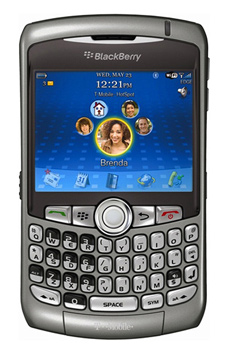
courtesy image
I recently finished Highbrow’s excellent 10-day course on inventions that changed the world.
In keeping score, half of the cited inventions quickened the sharing of information (writing, printing press, telephone, personal computer, internet). A third hastened our transportation (steam engine, automobile, airplanes). One marginalizes or maximizes physical dominance, depending on who owns more of it (gunpowder). And the last one lengthens our days (light bulb).
Interestingly, every one of these inventions involve some element of speed. The speed of a bullet. The speed of light. The speed of travel. The speed of knowledge. That’s why the world moves at an increasing rate. Our greatest inventions all involve speed.
Even this century’s greatest inventions largely involve speed. How fast you can get new or old music to your ears (iTunes, Spotify). How fast you can get answers to questions (Google). How fast you can connect with friends and family (Facebook, SMS). And how fast you can see the latest cat videos (YouTube).
Of course, many of these inventions involve size, frequency, and power. But when it comes to bigger, stronger, better, and faster—always bet on faster. It’s the future. And it’s likely what the “next big thing” will do more than others.

… than whipping your phone out at the alter. “Nothing’s official,” she said, “until it’s Facebook official!”
True story. Incredibly stupid. But true. The bride even had a pocket on her dress to hold her phone.
We now have the attention span of flies.
[youtube]http://www.youtube.com/watch?v=Vsghn7OKvg8[/youtube]
When used properly, I think iPhones are nifty devices. Like all Apple hardware, including my two Macs, they have an impressive interface. Still, iPhones are probably the most overstated status device of the decade. Case in point: Apple’s latest “Did you get my email?” commercial (shown), which attempts to embellish and sell three bad behaviors “without ever leaving a call.” Let me tear ’em down for you, may I? Continue reading…
 I’ve been an avid BlackBerry user since 2006. I think they’re great if you can moderate their use. (You don’t want to be the loser in the room who plays with their phone all night, right?) But I would also like to see some changes for the better. And becoming an iPhone is not one of them.
I’ve been an avid BlackBerry user since 2006. I think they’re great if you can moderate their use. (You don’t want to be the loser in the room who plays with their phone all night, right?) But I would also like to see some changes for the better. And becoming an iPhone is not one of them.
- Multi-color LED alerts. One of the best features of the BlackBerry is the ability to glance at it from afar without activating the screen to see if you have an unread message. For example, the little LED in the upper right corner blinks red when I have a new message. But I wish I could set different types of messages to display different color alerts. For example, the Curve’s LED blinks blue when in Blue Tooth mode, and green when fully charged. Why not put those colors to good use?
- Continue reading…

I got my first Blackberry, a pancake of a thing, back in January 2006. One replacement and 31 months later, I finally upgraded to a quasi outdated Blackberry Curve — I guess I’m what you call an apathetic technologist.
I’ve quickly grown fond of the 8320 and prefer it to the iPhone for the keyboard alone (though the camera, iTunes syncable media player, 2GB SD card, and Wi-Fi are more than functional).
But I digress. How often do you upgrade phones? It seems like some people swap every 6 months…
After four years, I canceled my Vonage line on Friday. I only used 20 minutes per month on average over the last year, so it made sense in my case to ditch the service, even though it works fine. Instead, I will rely solely on Blackberry and Skype for voice chat, as I have done for personal use since 2003.
I have so far managed to cut back my phone use by only answering expected or known calls. I check voice mail as soon as I’m notified, and I have a policy of returning both calls and emails within two working hours.
I tell my professional contacts that email is “preferred,” and my cell phone is “secondary.” To further encourage asynchronous communication, I reward emailers with faster response times. It works cleverly well, and I’m one step closer to my goal of ditching web access for an entire year. Whatever it takes.



 I’ve been an avid BlackBerry user
I’ve been an avid BlackBerry user 